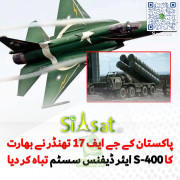
http://dawn.com/2013/01/03/foreigners-hold-3-1bn-worth-kse-equities/
[HI]Foreign investors hold $3.1 billion worth Pakistan equities, which represents 30 per cent of the stock markets free-float[/HI]. It also accounts for seven per cent of KSEs aggregate market capitalisation of Rs4.2 trillion.
During the outgoing year, foreign portfolio inflow amounted to $125 million, with the market recovering almost the entire net outflow of $127 million in 2011.
But analysts at brokerage Topline Securities pointed out that the overseas investment in Pakistani equities was nowhere near the net purchase of shares by foreigners in certain other Asian emerging and frontier markets. Notable among them were India which saw an inflow of a whopping $24bn; Korea $15 billion and Taiwan $5 billion.
(Comparing Pakistan to India,Korea and Taiwan is simply insane. This shows that even the market pumpers are out of excuses)
Investment Advisory firm, Magnus Investment Advisors, which tracks investment in Pakistani securities from the perspective of institutional investors both local and foreign calculated returns on equities of nine emerging markets: Brazil, China, India, Indonesia, Malaysia, Pakistan, Philippines, Thailand and Turkey. The period of study was from Nov 1997 to Oct 2012.
It showed that [HI]during the 15 year period, the KSE-100 index provided an annual return in terms of US dollars at 9.51 per cent[/HI], which was actually the median of the group of the above 10 countries under study. Philippines, Turkey, Brazil ad China had lower returns.
The annual real return in local currency for KSE-100 stood at 6.45pc, which was higher than the median. The returns are better than expected given the multiple challenges Pakistan has faced during this time period, the Magnus stated.
The evaluation of risk of KSE-100 on six measures showed that the average dollar loss in the four years was the most revealing risk measure for foreign investors, as it captured historical meltdown risk.
We found that KSE-100′s average dollar loss in the four worst years was 36.12pc against the median dollar loss of 35.80pc, with Indonesia, Brazil and Turkey posting higher average loss, the report stated. Thus, the anecdotally held view that KSE-100 has higher risks than other markets was not borne out by facts, it said. The conclusion drawn was that Pakistani stocks did not represent any unusual risk in the universe of emerging countries.
But the important insight gained by Magnus was regarding allocation to KSE-100 for US investors under a mean variance analyses framework. Two constraints were applied, i.e. no shot sales and minimum allocation of 50pc to Standards & Poors 500.
Accordingly, Minimum Variance Portfolio of US investors stood at 55.75 per cent; followed by UK 15.59 per cent and China 15.17 per cent. Investment in Pakistan stocks makes sense for US investors, given the low correlation of 0.14 between S&P-500 and KSE-100″, the analysts say. Magnus admitted that the size and liquidity issues would rule out investment in KSE-100 as a credible option for many large funds, yet the insight could prove useful for a few small to mid-sized institutional investors.
COMMENTS: I have some friends who are invested in KSE. When I share my findings with them, their question is "so why isnt the market crashing". Thats like jumping out a 60 story building and claiming that you are still alive for 3.25 seconds. Anyways, here's my take on it
Growth in M3 has been 14% annual since 2008. Also, stocks are inversely correlated to interest rates. The rate expectations drive markets. The recent uptick in inflation has scared off the market with expectations that the SBP will raise the rates. SBP wont raise the rates because its decisions are not based on Economic principles, given the rupee doesnt implode in the forex.
Oh.. and Happy New Fiscal quarter!































